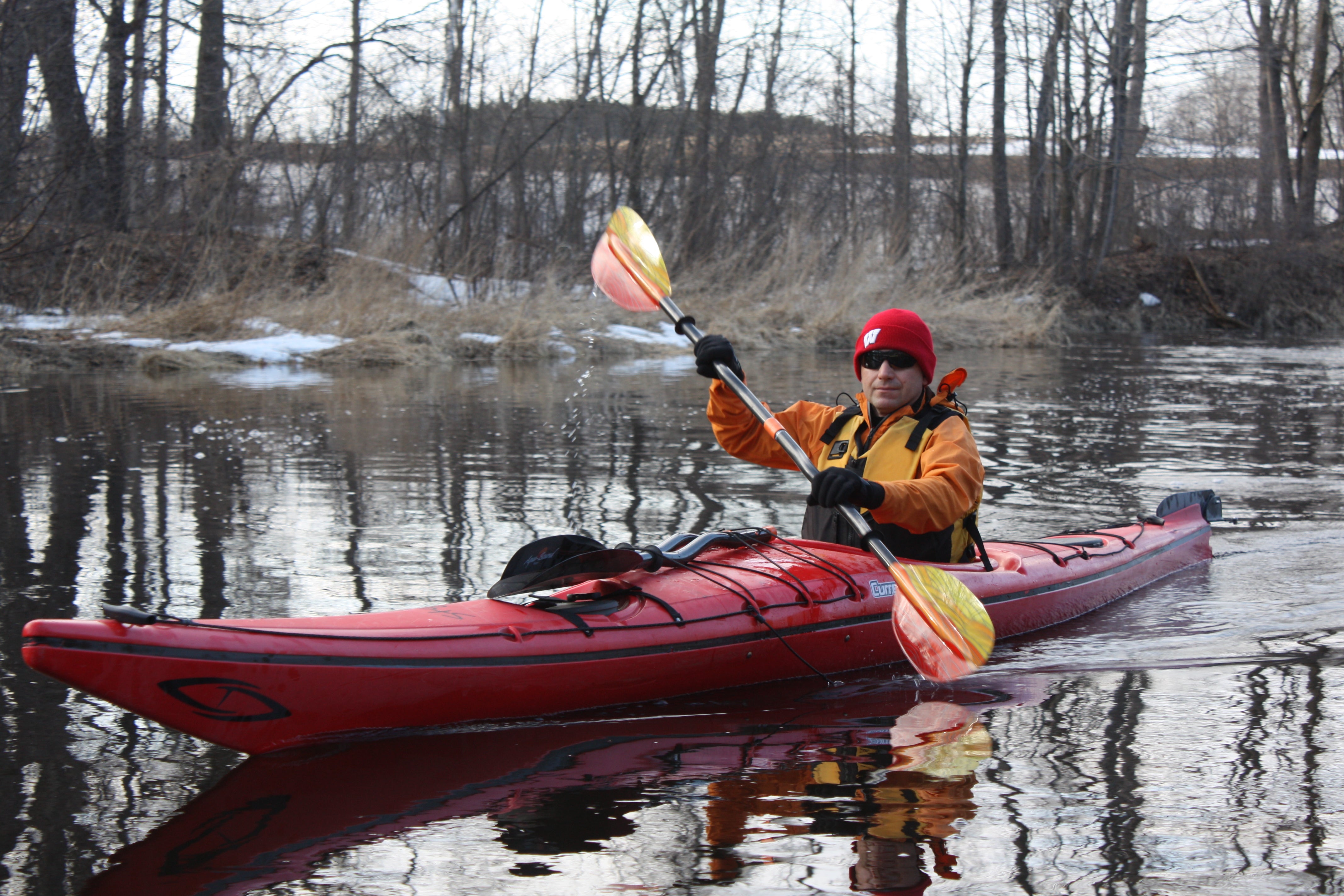How We Design our Kayak & SUP Paddle Shafts

Jason has been the Operations Manager at Aqua-Bound since its move from British Columbia to Wisconsin in 2008. Here he takes us behind the scenes to explain how we design and manufacture our kayak and SUP paddle shafts…
Shaft Material Used in Our Paddles
Aqua-Bound’s paddles—both kayak and SUP—come with three different types of materials for the shaft:
Anodized aluminum: The process of anodizing gives the metal a more durable finish and more resistance to corrosion than without it. Aluminum is the most affordable material used in our shafts.
Fiberglass: Lighter than aluminum and warmer on your hands, fiberglass is a mid-range material for weight and price.
Carbon: The best strength-to-weight ratio available for paddles. All our carbon paddles are made with 100% T-700 carbon. T-700 is a high quality, strong carbon fiber which is often used in aerospace application. The fibers can be weaved into patterns, giving each model a different look. Carbon is the most expensive material we use.

Paddle Strength and Durability by Material
All Aqua-Bound’s paddles are designed to be durable for everyday use on the water without being babied.
Our engineers design both Fiberglass and Carbon fiber shafts to have very similar structural properties. Because carbon is stronger per unit volume than fiberglass, carbon shafts are ultimately lighter than fiberglass shafts, but no less strong or durable.
Aqua-Bound has a long history of making paddles and we have a talented team of engineers designing them. That experience, along with sophisticated equipment to test and validate shaft designs, means we can optimize shaft weight without sacrificing durability.
Our breakage rates are some of the lowest in the paddle industry. Our fiberglass and carbon shafts have less than a 0.15% breakage rate.
Ovalization of the Shaft
All our kayak paddle shafts are ovalized—they’re shaped to fit more comfortably in your hands than basic round shafts. The ovalized shaft also lets you feel the orientation of the blades when they’re feathered or when one blade is in the water.
The newer bent-shaft paddles (Tango and Whiskey models) have a triangular validation. That gives an even more ergonomic grip for many hours on the water in high-energy paddling situations.
Flex vs. Stiffness
Our Research and Development team did some significant field testing with the flex and stiffness of our paddles 8-10 years ago. After hundreds of hours on the water, we discovered:
- A stiff shaft is best for situations that demand short bursts of energy and power, like whitewater and playboating.
- A more flexible shaft is ideal for long hours on the water—recreational and touring.

From an engineering standpoint, a more flexible shaft stores energy in the first half of the stroke and releases it in the second half of the stroke. This results in a smoother power curve and a significant reduction in stress on the paddler’s joints over several hours.
Don’t think greater flex means reduced structural integrity, though. Our engineers have designed a carefully-selected amount of flex into the shaft’s structure while still maintaining a high “break strength.”
Swing Weight
The swing weight of a paddle can be tested by gripping the paddle with one hand in the center of the shaft, hold it away from you and rotate your wrist. A paddle with a higher swing weight will feel heavier on the ends than a paddle with a lower swing weight.
Lighter blades help achieve a lower swing weight. A paddle with carbon blades combined with a carbon shaft has the least swing weight of all.
The lower the swing weight, the more effortless each stroke will be, the longer you’ll be able to stay on the water comfortably, and the less fatigue and soreness you’ll have when you’re done for the day.
Testing in the Field
Our new paddle shaft designs are field tested, then dialed-in as needed so the finished product is the best possible paddle on the market for that price point and specific end-user.
We depend on expert kayakers who’ll put a prototype through as many real-life scenarios as possible before we release a new paddle to the world.
An example of that are our latest high-end models: the bent-shaft Whiskey and Tango kayak paddles. ProStaffer William McCluskey provided the kind of extreme testing we were looking for so we were sure we couldn’t make these paddles any better. The first prototype we gave him wasn’t up to snuff, so we made the adjustments he suggested.

Then we asked expert kayaker David Horkan to try out the new-and-improved model. He ran it through his own series of testing and gave it the thumbs-up (you can read his review of the Whiskey Carbon here).
(After his very favorable impression with the new bent-shaft Whiskey, he agreed to join our ProStaff team!)
No matter which kind of paddler you are or which type of paddle you choose, you can be sure your Aqua-Bound paddle has been designed, tested and crafted to give you the best possible paddling experience.
Do you have questions about choosing a kayak of SUP paddle? Call or email our friendly Customer Service team today: 715-755-3405 • sales@aquabound.com
More for you:





